 Features
Features

More than 22,000 artefacts, ranging from modern paintings and drawings to sculptures of the 4th century, are housed in the HCM City Fine Arts Musuem, an early 20th century building complex that opened to the public in 1989.
 |
| A part of the museum’s collection of 12,000 artefacts featuring Vietnamese ancient and contemporary art. VNS Photo by Phương Mai |
The HCM City Fine Arts Museum, the former home of a wealthy businessman in the early 20th century, displays both ancient and modern art from Việt Nam and other countries. Phương Mai reports.
More than 22,000 artefacts, ranging from modern paintings and drawings to sculptures of the 4th century, are housed in the HCM City Fine Arts Musuem, an early 20th century building complex that opened to the public in 1989.
Besides its modern art pieces and stunning collection of ancient Óc Eo and Champa art, one of the museum’s most prized possession is Vườn Xuân Trung-Nam-Bắc (Spring Garden in the Centre, South and North).
The massive lacquer piece by famed painter Nguyễn Gia Trí, a pioneer in the art of lacquer in Việt Nam, depicts slender Vietnnamese women from the centre, south and north wearing the traditional áo dài (long robe), walking outdoors and singing happily in a spring landscape.
On the left and right ends of the 5.4-metre long work are two parallel sentences in ancient Han Chinese by poet Đào Duy Từ, translated into Vietnamese: Bóng trăng như đèn tỏa sáng trên mặt nước/ Hương hoa thoang thoảng bay theo gió đưa (The moon shadow looks like light shining on the water surface/Wind spreads flower scents in the air).
“The painting expresses Trí’s love for the country and its people, and a desire for a peaceful life,” said Mã Thanh Cao, who began working at the museum in 1998 and was its director from 2009 to 2015. “It also reflects Tri’s skills in lacquer painting techniques.”
Trí spent 20 years, from 1969 to 1989, completing the nine-panel work, his largest and last painting.
The artist, who died in HCM City in 1993 at the age of 85, was one of the first graduates of the Indochina Fine Arts College (now the Việt Nam Fine Arts University in Ha Noi). He was best known for his mastery of lacquer but was also praised for his woodcut prints and cartoons.
Vườn Xuân Trung-Nam-Bắc was first displayed at the museum in 1991 after the city bought the work from the artist for US$100,000. “The painting was a wonderful and generous gift from the city’s People’s Committee,” Cao said.
While the purchase sparked a public debate as the amount was considered a huge sum at the time, the controversy ended a few years later when a Belgian collector offered to buy the painting for $1 million.
In 2013, the Government recognised the Vườn Xuân Trung-Nam-Bắc painting as a national treasure. Besides the work, 95 preliminary sketches for Tri’s lacquer works are on display, either donated or sold by his family to the museum.
Significant collections
Besides Tri’s impressive works, two collections featuring artists’ sketches during the revolutionary period as well as Vietnamese ancient are among the significant holdings of the museum.
The sketch collection, which includes the first Vietnamese artworks to be shown at the museum, has more than 3,000 works, mostly created by soldier-painters from the south, including Trang Phượng, Thái Hà, Võ Xưởng, and Huỳnh Phương Đông, during the resistance war against the Americans.
Most of the artists used pencil, watercolour or charcoal to depict historic events, soldiers on the battlefield, people engaged in daily activities, and beautiful landscapes.
Some of the outstanding works are Làm Lao Động (Working) by Thái Hà (1964); Góp gạo nuôi quân đánh thắng (Collecting Rice for Soldiers) by Võ Xưởng (1973); and Bên Cầu Trượt – Đội 117 (Besides the Wharf – Unit 117) by Ngô Chí Viễn (1974).
“Soldier-painters used their own artistic language to capture the truthful moments of war, but they also discovered the country and people’s beauty amid the cruelty of war,” Cao said. “The collection plays an important role in Việt Nam. It helps younger generations learn more about war and appreciate the peace of today.”
Within the complex’s smallest building is a priceless collection of ancient art and sculpture, with 12,000 artefacts made of earth, stone, ceramics, wood or copper.
Most of the ancient art and decorative pieces, including earrings and cooking pots, were recovered by the HCM City customs and police departments from smugglers and thieves who had sold them to Vietnamese or foreign buyers.
The collection include remnants of tools, vases and statues of gods of the Óc Eo culture from the 4th to 12th century and the Champa culture from the 7th to 16th century, as well as pots and statues produced at famous ceramic centres in the south from the 19th century to mid-20th century.
Modern art
Besides artworks and decorative pieces from antiquity, the museum over the last 30 years has collected more than 6,000 modern Vietnamese paintings and sculptures, of which 300 works were presented by the artists or their families.
Most of the work was done by graduates of Indochina Fine Arts College (founded in 1925) and Gia Định Fine Arts College (now the HCM City University of Fine Arts).
Lê Bá Đảng, Võ Lăng, Trương Hán Minh and Bùi Hải Sơn are a few of the more famous artists, while works by young artists like Trần Ngọc Sinh and Ngô Thị Hải Yến are also on display.
Apart from pieces by Vietnamese, the museum has a number of artworks by foreign artists, such as Oba Shuji and Kato Shojiro from Japan, Laurent Krief from France, and Boris Simionovich Iliukhin from Russia.
“Thanks to the generosity of foreign artists, the museum’s collection is richer in both genres and topics,” Trịnh Xuân Yên, deputy director of the museum, said.
The museum, which organises 25-30 exhibitions a year, has become a frequent venue for both local and foreign artists to introduce their works.
“The diversity of the museum’s collection and frequent exhibitions have attracted arts lovers and artists across the country and from all over the world. Last year, the museum welcomed more than 300,000 locals and foreigners,” Yên said.
Author Hoài Hương, a frequent visitor at the museum, said the building was “not only a charming space displaying beautiful artefacts, but also a special library where I can learn about the values and thoughts of the older generations from their work.”
History
To fulfill the city’s mission of becoming a major economic and cultural centre, the city’s People’s Committee established the Fine Arts Museum in 1987 to conserve and introduce valuable artworks of Việt Nam.
Located at the corner of Phó Đức Chính and Nguyễn Thái Bình streets in District 1, the museum is near many of the city’s attractions such as Bến Thành Market and the Opera House.
Construction of the three buildings, with a mixed French and Oriental style on an area of more than 10,000 square metres, took place from 1929 to 1934.
Veteran artist Trang Phượng, who was involved in the establishment of the museum, said: “The three buildings are a perfect place to display art from all over the world and help locals learn more about fine arts and elevate their artistic tastes.”
With its original architecture intact, the building still contains the first lift in HCM City. Its sinuous wrought-iron decorative details echo the elegant design of the entire complex.
Stained glass windows, ceramic-tiled floors and roofs, carved wooden boards, and marble pillars add up to a style so distinctive that the building is as well-known as the art within it.
Vicky Võ, a Vietnamese-American who visited the museum recently, said: “The museum is beautiful. I hope I have a chance to try the lift! I’m impressed by the collection, especially the modern arts section.”
Yên said the museum was waiting for the city to approve the use of the lift. “If so, it will be an unforgettable experience for tourists.”
The museum’s official opening to the public was in 1989, a two-year delay, as it still needed repairs and had a shortage of exhibits. At that time, only the main three-storey building was open, displaying Vietnamese contemporary and modern art.
In 2011, a second building opened after the museum received an allowance from the city. It is regularly used to hold permanent exhibitions as well as solo and group exhibitions for artists from Việt Nam and other countries, including Thailand, Japan, Russia, France, Canada, and the US.
Four years later, the museum opened its third building, which contains the ancient art collection.
“When we have more space, we will introduce more artworks to the public,” Cao said, adding that the museum’s biggest difficulty was finding space for storing and preserving artworks.
“The city allowed us to use the three buildings for display only. Many artworks have to be kept in small rooms in the museum,” Cao said.
Future plans
Yên said the museum had asked the city for permission to build a new three-storey building to store and preserve artefacts. “We hope to receive approval soon,” he said.
“The museum is focusing on our inventory and digitising our collections, offering training to staff, and collecting more contemporary artworks like videos and installations,” he added.
Around 90 per cent of its inventory is now digitised, and includes information about sources and images of the artworks from all sides, among other data.
The museum also plans to send its staff to training courses on preservation, communication and exhibit design.
“We are promoting community activities such as painting classes for children in the city and field trips for arts students,” Yên said. “The museum is trying its best to become an interesting destination for art lovers at home and abroad.” VNS
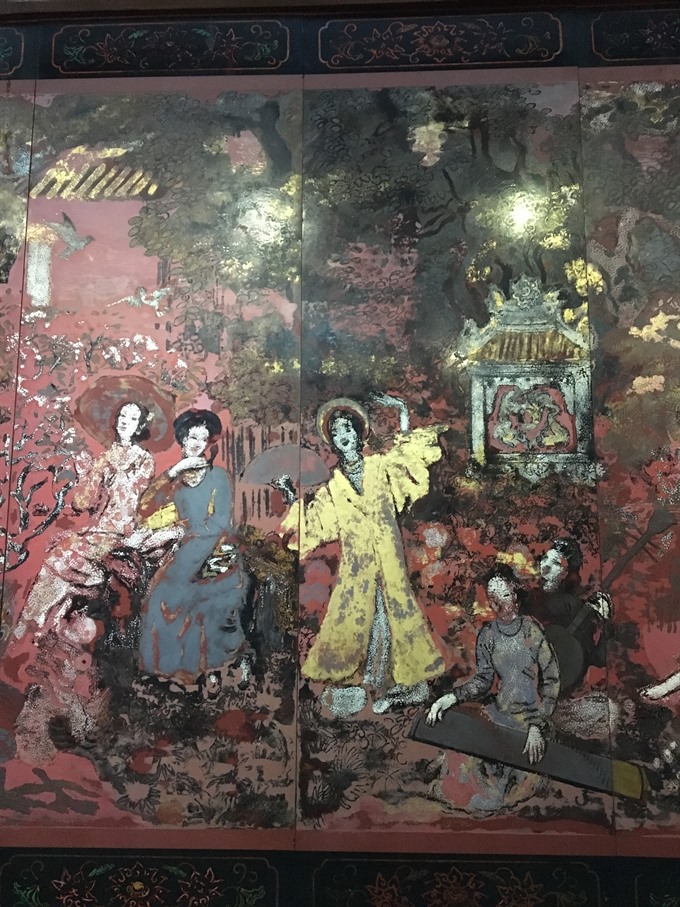 |
| Nguyễn Gia Trí’s painting depicts beautiful Vietnamese women from the the centre, south and north walking outside during the springtime. VNS Photo by Phương Mai |
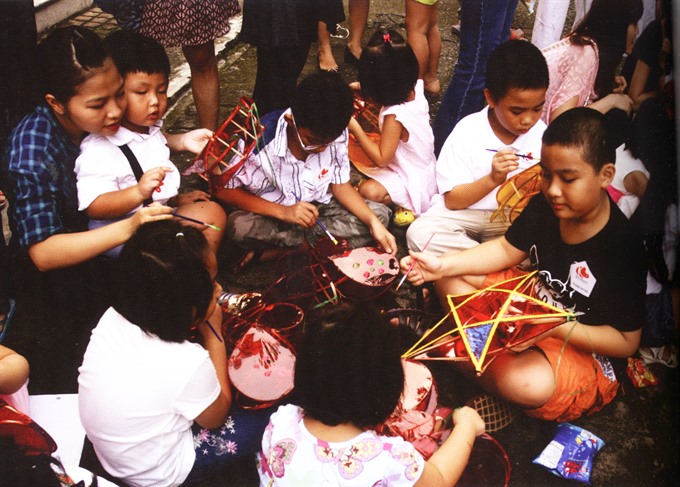 |
| Children enjoy making lanterns at the HCM City Fine Arts Museum during the Mid-Autumn Festival. Photo courtesy of the organiser |
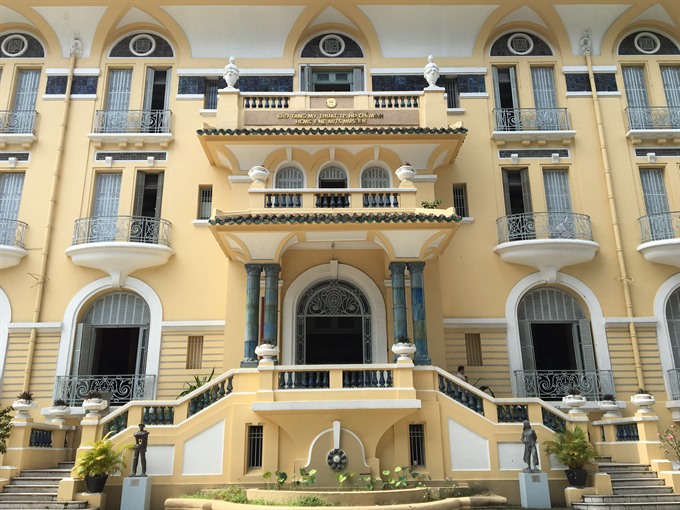 |
| Established in 1987, the HCM City Fine Arts Museum’s original architecture is still intact, a blend of French and Oriental style. VNS Photo by Phương Mai |
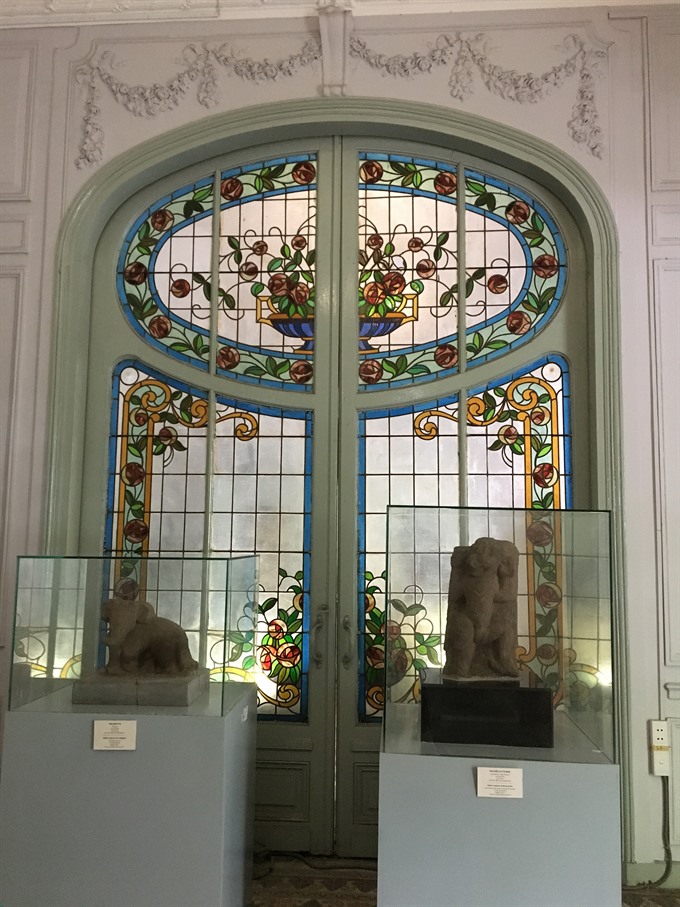 |
| The stained glass windows of the HCM City Fine Arts Museum, which was once the home of a wealthy businessman. VNS Photo by Phương Mai |
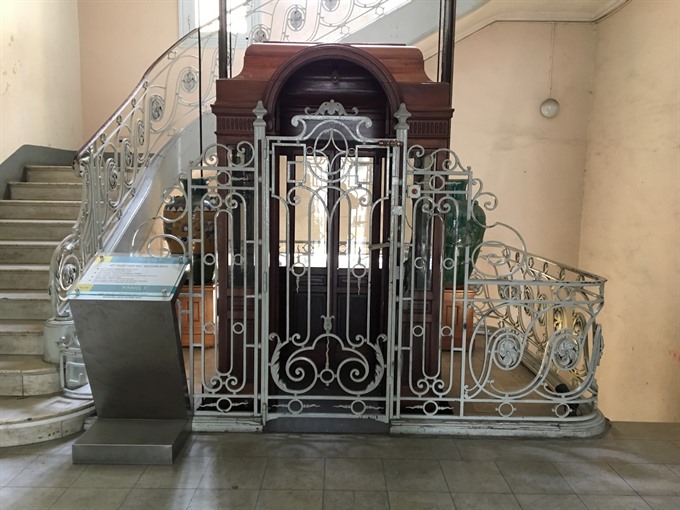 |
| The lifts in the museum were the first to be built and used in HCM City. VNS Photo by Phương Mai |




